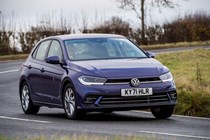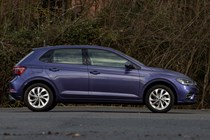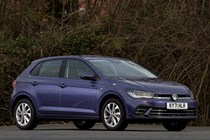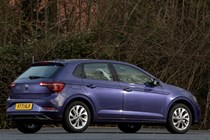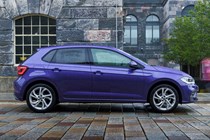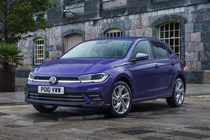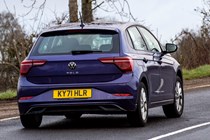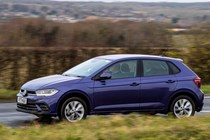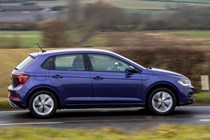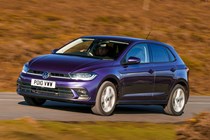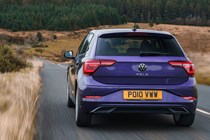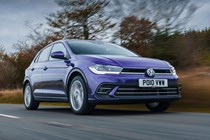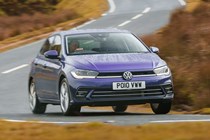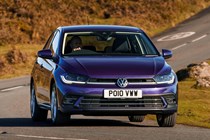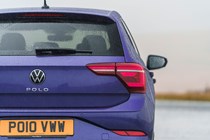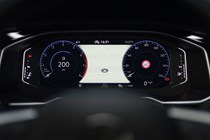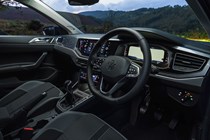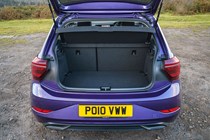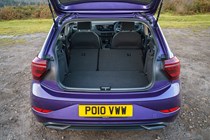
Volkswagen Polo interior, tech and comfort
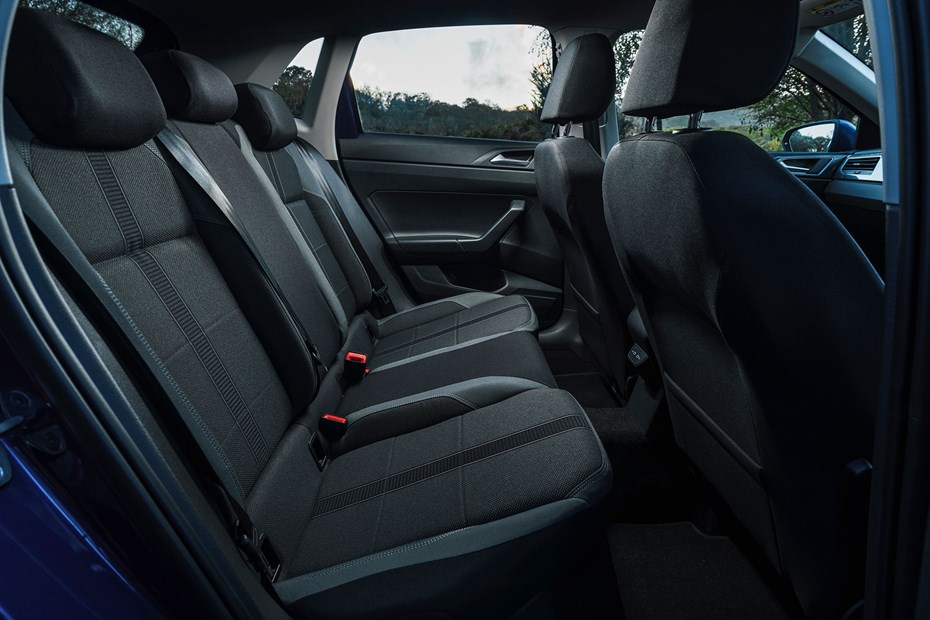
- Comfortable, upmarket cabin
- Frustrating aircon control panel
- Crystal clear infotainment system
How is the quality and layout?
The quality of materials used in the Volkswagen Polo’s interior is really good. It’s noticeably better than budget offerings such as the Suzuki Swift and Dacia Sandero, but we’re not convinced it’s sufficiently better than the Renault Clio to justify the extra £3,000 the Polo costs. Especially when the Clio is more fun to drive.
Still, Volkswagen has tried to make the Polo feel like a more premium product. The most common touchpoints such as the steering wheel, gear lever and door handles feel suitably upmarket, and everything’s been screwed together very well. We heard nary a squeak or rattle during our testing, even after we subjected the Polo to some of Lincolnshire’s most battered roads.
How well the dashboard layout works depends on which model we’re talking about. They all come have a digital instrument cluster and infotainment system touchscreen display, which work perfectly well. The different is in the air conditioning control panel. Lower-spec models have physical buttons and dials, which we like a lot.
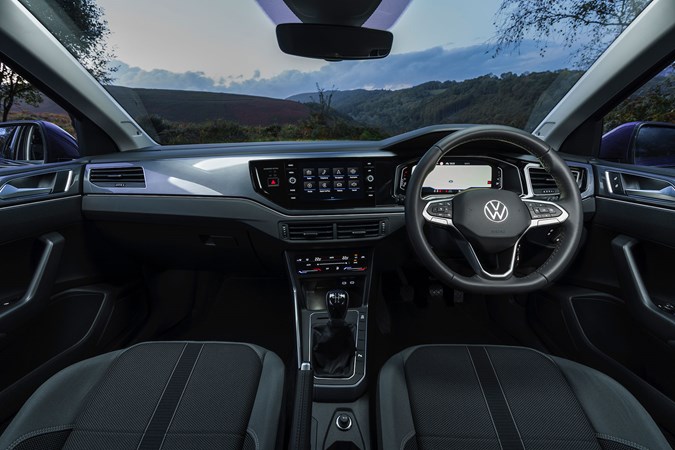
High-spec models have a touch-sensitive panel that you swipe. It’s as infuriating in the Polo as it is in other Volkswagens. It’s not even backlit at night. And the shiny black plastic infotainment surround is a magnet for fingerprints.
Infotainment and technology
The Polo comes with various grades of infotainment system, depending on how far up the car’s model range you climb. Entry level Life and Match models have 8.0-inch screens, while the flagship Style, R-Line and Black Edition variants feature a larger 10.25-inch unit.
The latter screen is particularly impressive. Its graphics are crystal clear, and the extra real estate makes it easier to navigate the menus or use split screen mode when running Android Auto or Apple CarPlay. Both screens can be a little slow to boot up, especially during the winter, but they’re far easier to navigate than the apparently simpler system fitted to the Vauxhall Corsa.
If you’re a proper technophile, you’ll be pleased that Volkswagen has also shifted the Polo’s instruments to a fully digital panel. It’s found on every model, its size corresponding to the infotainment display. It displays a variety of information including speed, engine revs and navigation instructions.
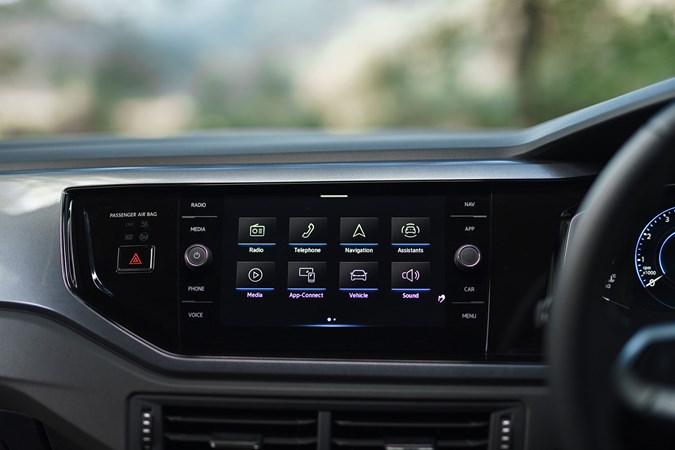
The difference in size doesn’t affect the instrument display’s clarity, and it isn’t as affected by sun glare as some similar displays we’ve used. Such as those in Stellantis superminis like the Peugeot 208 and Vauxhall Corsa.
Comfort
- Good ride comfort for a supermini
- Bigger wheels impact ride
- More refined than rivals
This is where the Volkswagen Polo really starts to make sense. It’s more comfortable and refined than all its rivals, and it feels like a far bigger car than it is. There’s tonnes of adjustment in the front seats and steering column, so drivers of all shapes and sizes can get comfortable. Some of our testers found that taller drivers might find themselves reaching slightly too far for the steering wheel if they set the seat in a position that’s comfortable for their legs, but that’s our only complaint.
The seats are supportive, too, especially if you opt for either a Style or R-Line model. They feature old-school manually adjustable lumbar support that cradles your lower back just enough to prevent cramp up on a long drive. The seats have good side bolsters, too.

We’re a little disappointed by the amount of engine vibration, but Volkswagen’s engineers aren’t miracle workers. Three-cylinder engines are inherently rougher than four-cylinder engines, yet the Polo still manages to better its rivals for quietness and refinement. That’s true of the entry-level 80hp engine, though the more powerful options are noticeably better – they’re the ones to get if you really value a quiet drive. Though Ted Welford thought his manual-equipped long-term test car could have done with a sixth gear for quieter motorway driving.
You hear less road noise in the Polo, as well. The car’s structure and sound deadening supress tyre roar and suspension clonks very well, especially when teamed with the smaller alloys and large profile tyres lower spec models have.


